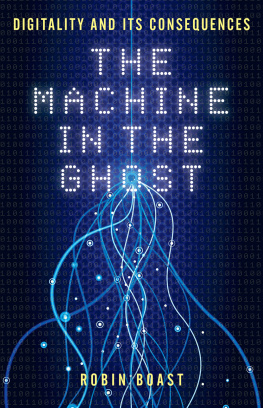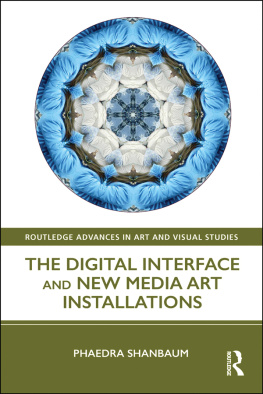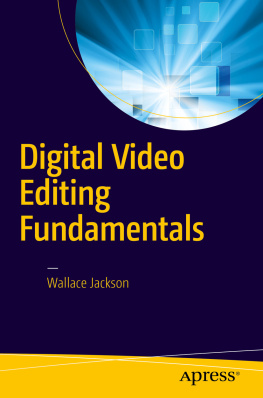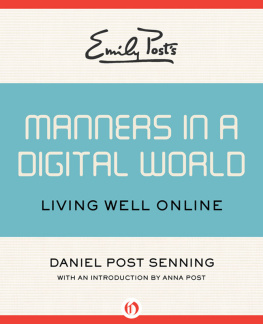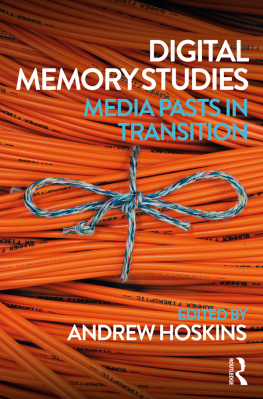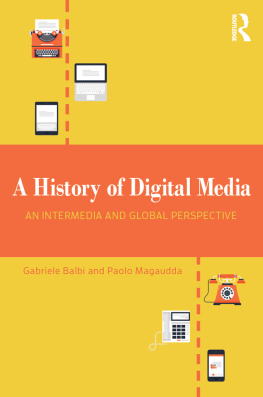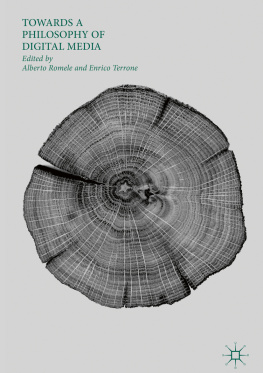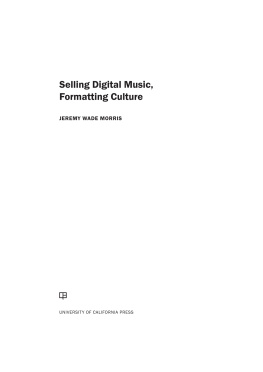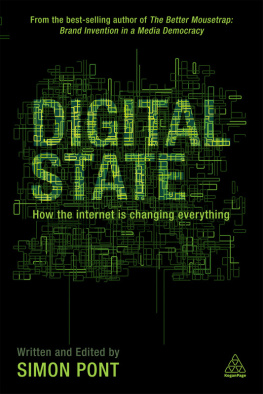No part of this publication may be reproduced, stored in a retrieval system, or transmitted, in any form or by any means, electronic, mechanical, photocopying, recording or otherwise, without the prior permission of the publishers
INTRODUCTION
T his is a book about the digital, or, rather, about how digitality emerged from a complex set of technologies, circumstances, social and economic needs and desires over the past 150 years. The digital that I explore in this book is not about fingers; neither is it about numbers, nor even necessarily about computers or computation. It is about the encoding that underlies all of the technologies that today we refer to as digital. This is not the history of digitality, but a history: my wandering through a tangled social and technological landscape that has emerged, in a complex way, since the mid-nineteenth century, and its consequences for what we do, and can do, with digital technologies.
I have spent my life in this increasingly digital world, and have spent all of my professional life working with what we now call digital technologies. Many of you who find yourselves reading this book will have spent your entire life surrounded by the digital. You are of the digital generation, whose lives have been completely engaged with digital devices, digital services and digital objects. By contrast, I did not personally encounter the digital until I was in my early teens. That was over forty years ago, and, aside from a few of my friends in high school, none of the rest of my fellow students had at that time had any direct encounter with digitality. So the small group of five of us, and one teacher, who would sit around our terminal, with its modem link to the University of Colorado mainframe, were part of a very small collective who had actually worked with the digital.
Today, of course, it would be hard to find anyone who has not had some direct engagement with the digital. There are few people in the world who do not have some sort of digital identity, for we dont need to own any devices for us to exist digitally. Even if we are not online, and do not have our own digital space, we all have multiple digital identities that have been recorded by official agencies in multiple databases, logs and official digital documents. It would be hard, if not impossible, to find anyone who was not part of the vast digital archive in some form.
Those of us who use digital devices regularly are all digitally competent if not actually fluent. However, few would actually be able to come up with more than a cryptic definition of digital. We are told that digital technologies are about computing or computation, yet few of us use these ubiquitous technologies to compute. Of course, we do occasionally use the calculator app that hides inside our Utilities folder. We may even use a spreadsheet from time to time, or even regularly in our work, but even then the vast majority of work done on spreadsheets involves tables tabulation not calculation or computation. Do any more than a few of us routinely use these technologies to compute? No. If what we mean by computing is not simply using these essentially algorithmic devices, which process digital codes via logic circuits, to compute or calculate, but using them for the vast diversity of media and communication work that we do with these devices, then an interesting thing about digital computing is how little computing computation, reckoning, calculation actually goes on. What is even more interesting, in my mind, is how little computing, in this sense, ever went on with these digital technologies. In fact, digital technologies, and digital media, have had very little to do with computation, ever.
So, this begs the question, what is the digital? What is digitality? We all have a basic idea that the digital, digitality, has something to do with computers, which have something to do with binary numbers, 1s and 0s. However, beyond this folkloric understanding, the vast majority of people have little idea what is going on inside their multitude of digital devices, digital services and digital documents. This is nottheir fault, as one of the defining qualities of contemporary digital technologies is that there is an enormous remove between what we do when we use these media devices and how they work between superstructure and infrastructure. This separation was, in fact, an achievement. It was not always so, which is one of the points that I wish to discuss in this book. Our remove from the insides of digitality, from the infrastructure, was something designed and built, not a natural feature of digitality or digital technologies. In fact, early on, this remove was seen by many as downright undesirable.
Though one of the points of this book is that computing, in its generic sense, has very little to do with computation, what I primarily seek to do here is to provide an understanding of what digitality is or, more accurately, what it was and what it has become. But dont we know what the digital is? We are told, from innumerable sources, authoritative and marginal, that digitality is 1s and 0s, binary numbers, or more broadly the storage of information as 1s and 0s. We are told that digital is a term for a technology, or set of technologies, that creates, stores, processes and transmits data in electronic 1s and 0s. The problem with this conventional definition is that it conceals more than it reveals.
First of all, when we store or process digital data we are not storing or processing 1s and 0s. We are storing and processing ons and offs, the mere presence or absence of something: in the case of computers, the presence or absence of an electronic charge. These ons and offs, by themselves, carry no information beyond this. They are the simplest forms of information which is important nonetheless. Second, the ons and offs, which are generated, stored, transmitted and processed as signals, are not really 1s and 0s. Not to go into too much detail at the beginning, they are analogue potentials that the hardware interprets, electronically, as ons and offs. This is important, as the simplistic notion of the digital conceals the messy and complex reality that exists inside our digital devices. Finally, it also conceals the fact that even after the messy and complex reality of electrical potentials is translated by our devices into ons and offs, they still are not 1s and 0s. These ons and offs, the presences and absences, by themselves, do nothing.However, what makes the digital, as we use it today, digital is that the combination of ons and offs, in very specific albeit complex ways, encodes information. Over the past 150 years these codes have encoded all types of information, including all of our media. Translating or encoding something, a mediation, into a code of ons and offs this is digital, and this is the foundation of all digital technology. This is what it has become, and to a large degree what it always was a media technology.

